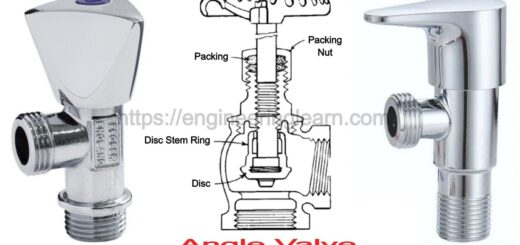Gear Hobbing Machine – Definition, Types, Uses, Working & Construction [Complete Explained]
![Gear Hobbing Machine - Definition, Types, Uses, Working & Construction [Complete Explained]](https://engineeringlearn.com/wp-content/uploads/2021/12/Gear-Hobbing-Machine-1024x539.jpg)
Introduction of Gear Hobbing Machine
Gear Hobbing Machine – Definition, Types, Uses, Working & Construction [Complete Explained] :- Gear hobbing or simply known as hobbing is a typical metal forming operation involving continuous gear production which is widely employed in the industries for high or low volume production of external cylindrical gears. Gear hobbing is one of the few major manufacturing operations currently employed in the gear production industry. Since modern engineering practices constantly keeps demanding more and more gearing of old and new types of gears with a higher and higher degree of accuracy and efficiency.
Construction of Gear Hobbing Machine
- In the gear hobbing process, the gear blank workpiece is rolled in the machine with a rotating cutter known as a hob. Gear hobbing operation is performed by using a multipoint cutting tool known as the gear hob. The gear hob in design looks similar to a worm gear containing multiple straight flutes all around its circumference parallel to its axis. These flutes are given a shape by giving proper angles so that these work as the cutting edges of a multipoint cutting tool.
- In the gear hobbing process, the multipoint cutting tool or the gear hob tool is steadily rotated at a reliable rpm and is simultaneously fed to the gear blank work-piece.
- The gear blank work-piece is also kept constantly revolving. Rpm of both the gear blank work-piece and the gear hob cutting tool are synchronized in such a way that for each revolution of gear hob the gear blank rotates by a distance which is equal to one single pitch distance of the gear being cut.
- The motion of both gear blank and the gear hob is maintained continuously and at a steady pace.
- The teeth of the gear cutting hob behave similar to screw threads, having a definite fix helix angle.
- Gear hobbing is a type of mechanical metal forming operation which is employed for the purpose of creating a wide variety of gears like spur gear, helical, hearing-bone, splines and gear sprockets, etc.
Working of Gear Hobbing Machine
Gear hobbing is a mechanical process of production of gears in which gears are cut by a generating process of rotating the gear blank work-piece and the cutter known as a hob at the same time with a specific gearing ratio between the hob and gear blank work-piece. In this gear hobbing process, the gear blank work-piece is constantly fed towards the rotating hob until the required depth of cut is reached. The hob is then constantly fed across the face of the blank till all the teeth are completely cut.
In hobbing of spur gears the hob teeth are set in a direction parallel to the axis of rotation of the gear blank. For the production of helical teeth hobbing process, the axis of the hob is set over an angle with the gear blank in order to produce the proper helix. While the worm gears are manufactured with the axis of the hob being set at the right angles to the gear blank workpiece.
Typically, two techniques are currently being employed in the hobbing process.
i) Conventional hobbing
ii) Climb hobbing.
The rate of production through the gear hobbing process is quite high as compared to the other gear generating and cutting processes. This process can be utilized for the production of different types of gears such as spur, helical, worm gears, sprockets, splines, etc. But since the rotary cutter employed for the cutting process cuts up to the shoulder this is not possible.
Types of Hobbing Process
1. Hobbing with Axial Feed
In the process of hobbing with axial feed, the gear hob is fed against the gear blank work-piece along the face of the gear blank and parallel to its axis of rotation. This method is generally employed in order to manufacture spur and helical gears.
2. Hobbing with Radial Feed
In this method of hobbing with radial feed, the hob or the cutting tool and gear blank work-pieces are set with their axis at an angle perpendicular to each other. The rotating hob or the cutting tool is slowly fed against the gear blank in a radial direction or a direction normal to the axis of gear blank workpiece. This method is suitable for the manufacturing of worm wheels.
3. Hobbing with Tangential Feed
This type of hobbing process is generally utilized for cutting teeth on the worm wheel. In this case, the hob is being held with its axis horizontal but at an angle perpendicular to the axis of the gear blank. The hob or cutting tool is fixed at full depth of the cutting tooth and then fed constantly forward axially. The hob in this operation is fed tangentially to the face of the gear blank.
Image Source :- meekare, semanticscholar













